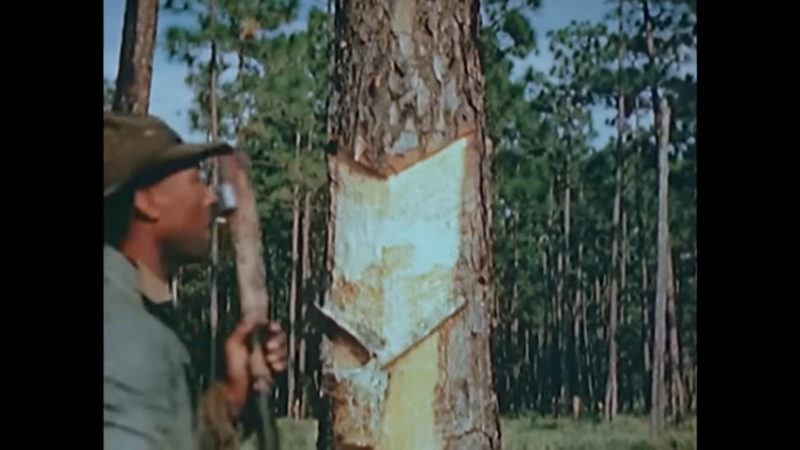Retrotechtacular: The Story of Turpentine

If someone in 2023 has ever had much call to use turpentine, chances are good it was something to do with paint or other wood finishes, like varnish. Natural turpentine is the traditional solvent of choice for oil paints, which have decreased in popularity with the rise of easy-to-clean polymer-based paints and coating. Oh sure, there are still those who prefer oil paint, especially for trim work — it lays up so nice — but by and large, turpentine seems like a relic from days gone by, like goose grease and castor oil.
It wasn’t always so, though. Turpentine used to be a very big deal indeed, as shown by this circa 1940 documentary on the turpentine harvesting and processing industry. Even then it was only a shadow of its former glory, when it was a vital part of a globe-spanning naval empire and a material of the utmost strategic importance. “Suwanee Pine” shows the methods used in the southern United States, where fast-growing pines offer up a resinous organic gloop in response to wounds in their bark. The process shown looks a lot like the harvesting process for natural latex, with slanting gashes or “catfaces” carved into the trunks of young trees, forming channels to guide the exudate down into a clay collecting cup.
Crews visit the tapped trees over a few weeks, collecting the sticky goo in wooden casks and bringing it back to a wood-fired still. There the resin is boiled, with the vapors containing mostly turpentine and water condensed and collected. The oily turpentine floats and is skimmed off the water, while the molten rosin left behind is a valuable industrial product in its own right; there’s probably a fair amount of it on your bench right now. The storage and grading process for the rosin is pretty fascinating; a small cube of solidified rosin is extracted from each drum using a special plug placed in a bung and compared against a standard color scale to determine the rosin’s purity. One imagines it varied a lot by season and species of source tree, and by how much the crude resin is boiled.
The last third of the film is a look at all the varied uses of turpentine back in the day. Paint thinning is there, of course, but it was also used as a natural solvent in a huge array of products, from pharmaceuticals to floor waxes. Turpentine was also considered a “naval store,” a term that came about when wooden ships ruled the waves and encompassed just about everything that could be used to build or maintain a ship — wood for masts, spars, and planks, hemp for cordage, and resin and solvents like turpentine to glue things together and keep them waterproof.
These days, the petroleum industry provides solvents that do the same job as turpentine that are easier and cheaper to obtain, and most of the natural turpentine needed is harvested not from tapping trees but by distilling the ground remains of stumps pulled up after a tree is harvested for lumber, or as a byproduct of the paper pulping process. Seeing how it was done not all that long ago is still a fascinating glimpse into our technological past.
from Blog – Hackaday https://ift.tt/EBz2F19
Comments
Post a Comment